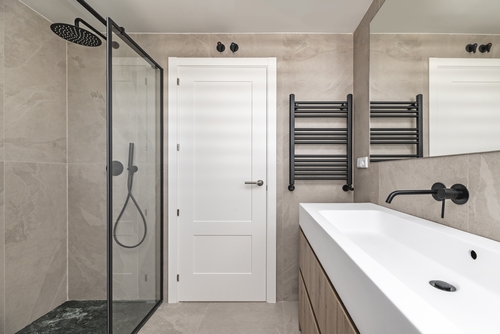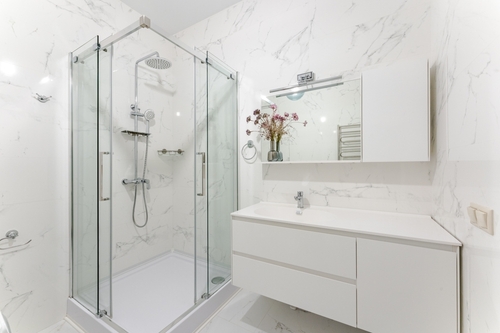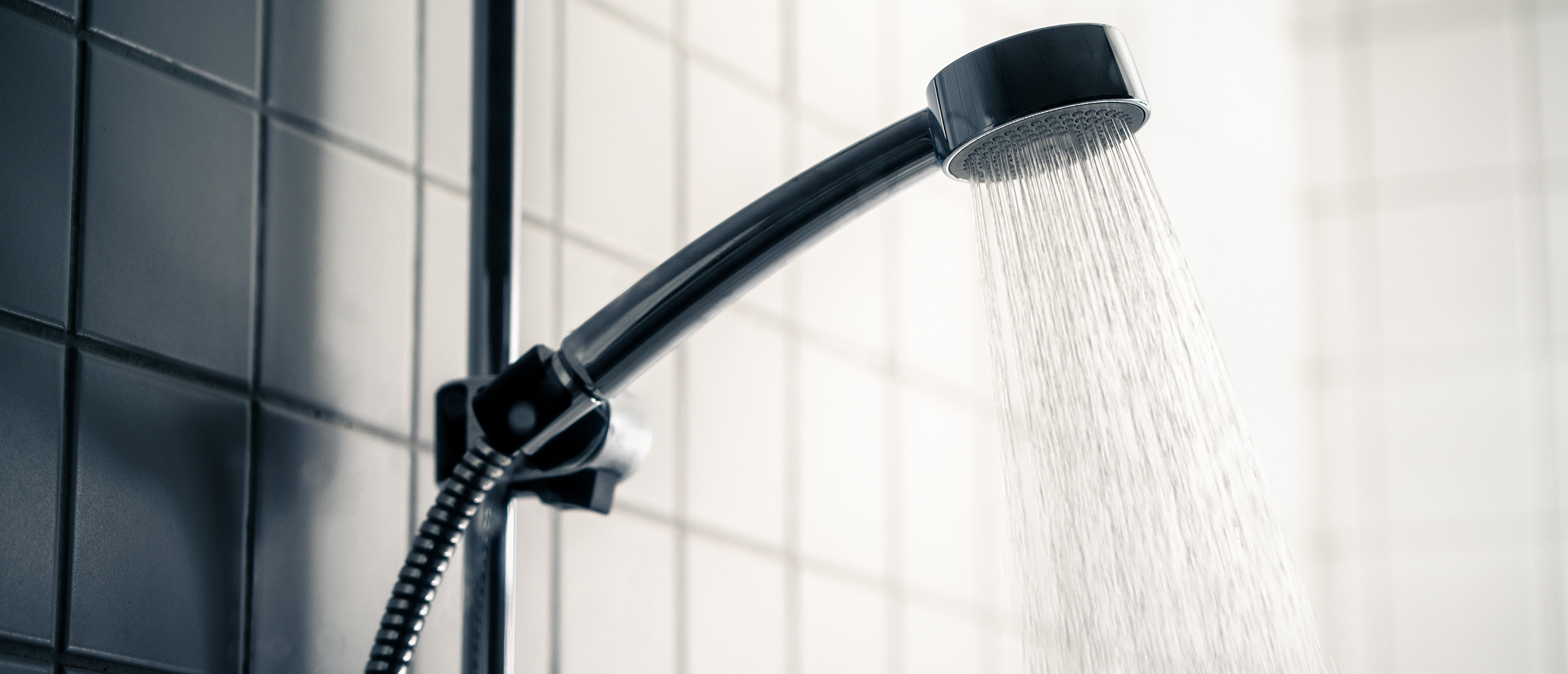A wet room shower tray made from microcement represents a modern, stylish, and highly functional addition to contemporary bathrooms.
Microcement, known for its versatility and sleek appearance, is becoming gradually more and more popular in interior design.
Its properties are values especially in spaces that require durability and waterproofing, for example wet rooms.
What is Microcement?
Microcement is a cement-based material that typically includes a mixture of fine aggregates, polymers, and other additives. This type of coating is applied in thin layers in order to provide a seamless and smooth finish. One of the key advantages of the material is its thinness, which allows it to be applied over existing surfaces without significantly changing floor levels. What is more, microcement floors are available in a range of various textures, colors and style options, like wooden, vinyl, trimmed and with timber joints. Such a wide selection makes it highly customizable and able to match any design aesthetic.
Why Choose a Wet Room Shower Tray for Microcement?
There are many reasons why microcement is a great choice for wetroom shower trays. Firstly, Microcement application creates a surface with no visible joints or grout lines. Such a surface is not only aesthetically pleasing but also has a practical nature. The lack of joints minimizes the risk of water infiltration, making the shower tray more resistant to leaks and easier to clean. What is more, microcement is known for its durability and resistance to wear and tear. It is resistant to the daily rigours of a shower environment, including water, soap, and shampoo exposure.

One of the critical aspects of any wet room is effective and secured waterproofing ability. Microcement is inherently water-resistant, and when we combine it with appropriate waterproofing membranes underneath, it will provide an effective barrier against moisture. This makes it particularly suitable for wet room applications, like in case of shower floor, where water is a constant presence. Microcement can be bought in various colors and finished in different textures, from smooth and polished to more tactile, non-slip surfaces. This allows customers to create a shower tray that perfectly fits the overall design of the bathroom. Whether aiming for a minimalist, industrial look or something more luxurious, microcement offers the flexibility that is so much needed. Since microcement can be applied over existing tiles or other surfaces, it avoids the need for extensive demolition, making renovations of microcement shower trays quicker and cheaper.
How to Install and Maintain a Shower Tray
The installation of a microcement shower tray requires expertise to ensure proper adhesion, completely waterproof features, proper drainage and finishing. The best advice would be that the process typically involves preparing the surface, applying a base layer, followed by several layers of microcement, and then sealing the surface to protect against water and stains.

Maintenance of a microcement shower tray is straightforward. Regular cleaning with neutral pH cleaners is recommended to prevent the buildup of soap scum and mineral deposits. Due to its non-porous nature, microcement is resistant to mould and mildew, reducing the need for harsh cleaning chemicals.
What Wet Room Trays Offer? Creating Benefits
A durable wet room shower tray made from microcement offers a blend of modern design, practicality, and durability. Its seamless, customizable finish not only enhances the visual appeal of a bathroom but also contributes to a more hygienic and waterproof environment. With proper installation and care, a microcement shower tray can be a long-lasting and stylish addition to any home.





